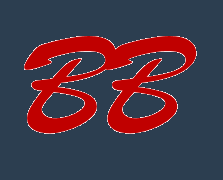How to choose the best nasal aspirator
A nasal aspirator is a small device that uses suction to draw snot from your baby’s nose. It is used when a baby is congested and that affects their abbility to breath. Using a nasal aspirator will make your baby breathing normally when he or she has a blocked nose.
As babies do not have the ability of blowing their noses, their mucus must be removed another way. And that’s when it is useful to haves ome kind of nasal aspirator.
- Bulb Syringe: a bulb nasal aspirator also known as bulb nasal is the classic snot-sucking tool. Made of rubber with a large ball on one end with a narrow, tapered opening on the other. This is the lowest-tech option available.
- Oral Suction Aspirator: a tube goes in the baby’s nose, and the other end goes in the parent’smouth, who uses oral suction to get the snot out. A filter prevents you from accidentally eating them.
- Electric Aspirator: These battery-powered gadgets are designed for ease. One end goes in the baby’s nose, parents press a button, and the mucus is sucked out into the mechanism to clear baby’s nasal passages.
Bulb nasal aspirator
They are also known as bulb syringe or nose bulbs. They are very easy to use:
- Before putting the syringe in your baby’s nose, squeeze it to release the air inside.
- While the bulb is still compressed, place the tapered tip into your baby’s nose, making sure it is inserted far enough that the outer edges of the nostril touch the end of the syringe and form a seal.
- Release the bulb to create a vacuum that will suck the mucus into the syringe.
- Remove the syringe and squeeze the bulb to expel the mucus into a tissue.
Bulb nasal aspirators are used in hospitals because they are cheap but they are not really designed to be used at home because they are very difficult to clean.
In addition to the cleaning problems, bulb nasal aspirators do not suck as well as other types.
Human suction nasal aspirator
A nasal aspirator generates vacuum by you sucking on the mouthpiece. A tube goes in the baby’s nose, and another tube in parent’s mouth, then parent must suck to draw out the snot. the snot is caught in a container and it will not enter your mouth.
- Place the mouth end into your lips.
- Place the nasal end into your baby’s nose, making sure a seal is created between the sides of the nostril and the tube.
- Gently suck in through your mouth to create a vacuum and expel the mucus.
Electric nasal aspirator
This nasal aspirator is electric so it is automatic and requires no manual labor and it provides continuous suction.
This nasal aspirator requires no squeezing, sucking, or anything that remotely resembles manual labor.
- If your nasal aspirator has a variable level, choose the desired suction level. If you are not sure what level to use, choose a lower level and increase the suction if necessary.
- Place the end into baby’s nose, ensuring it is inserted far enough for the outer edges of the nostril to touch it and create a seal.
- Push the button to activate suction. Shove it up your infant’s nose and wait for the snot to drain.
- Release when finished. Do not suction for more than a few seconds.
- Clean the filter or release the mucus following the manufacturer’s instructions.
Most of them run with batteries. The suction can not be adjusted and it is not very strong so they work better on thin and runny snot.
Important safety notes
- Always squeeze the air out of a bulb syringe before putting in your baby’s nose.
- If you are using saline drops to aid in thinning the mucus, never use them for more than four daysas they can dry out the nasal passages and cause them to become inflamed. Also only use saline products that were created specifically for babies.
- Do not use a nasal aspirator more than 2-3 times per day as it can irritate the lining of your baby’s nasal.
- Cleanliness: If you’re planning to use an aspirator more than once or twice, you need to make sure it can be thoroughly cleaned to prevent bacteria or mold growth. Make sure it can be disassembled to clean it, or that filters and tips are disposable to ensure proper hygiene. Clean the nasal aspirator after each use to prevent bacteria growth. For bulb syringes, soak in dish soap to loosen the mucus, run the soapy water through the syringe multiple times followed by clean water to rinse, and allow to dry completely. To sanitize, boil it in water for ten minutes. For oral suction or electronic aspirators, consult your manufacturer’s instructions for proper cleaning and sanitizing techniques.
- Material: The parts of the aspirator that come into direct contact with bodily fluids should be made of a material that does not harbor bacteria or facilitate its growth. Silicone is the standard for flexible but sanitary medical devices.
- Size of nasal tip: Babies grow rapidly, as do their nostrils. Choose a device that either has interchangeable tips or can accommodate different sized nostrils.
Comparison chart
| Bulb Nasal Aspirator | Human Suction Aspirator | Electric Nasal Aspirator | |
|---|---|---|---|
| Easy to use | ✔ | ✔ | ✔ |
| Easy to clean | ✘ | ✔ | ✔ |
| Strong suction | ✘ | ✔ | ✘ |
| Cheap | ✔ | ✔ | ✘ |
Conclusion
The most effective type of nasal aspirator is the human suction because it is controlled by parents mouth so there is a high control over suction. In addition, they are easy to use and easy to clean.
